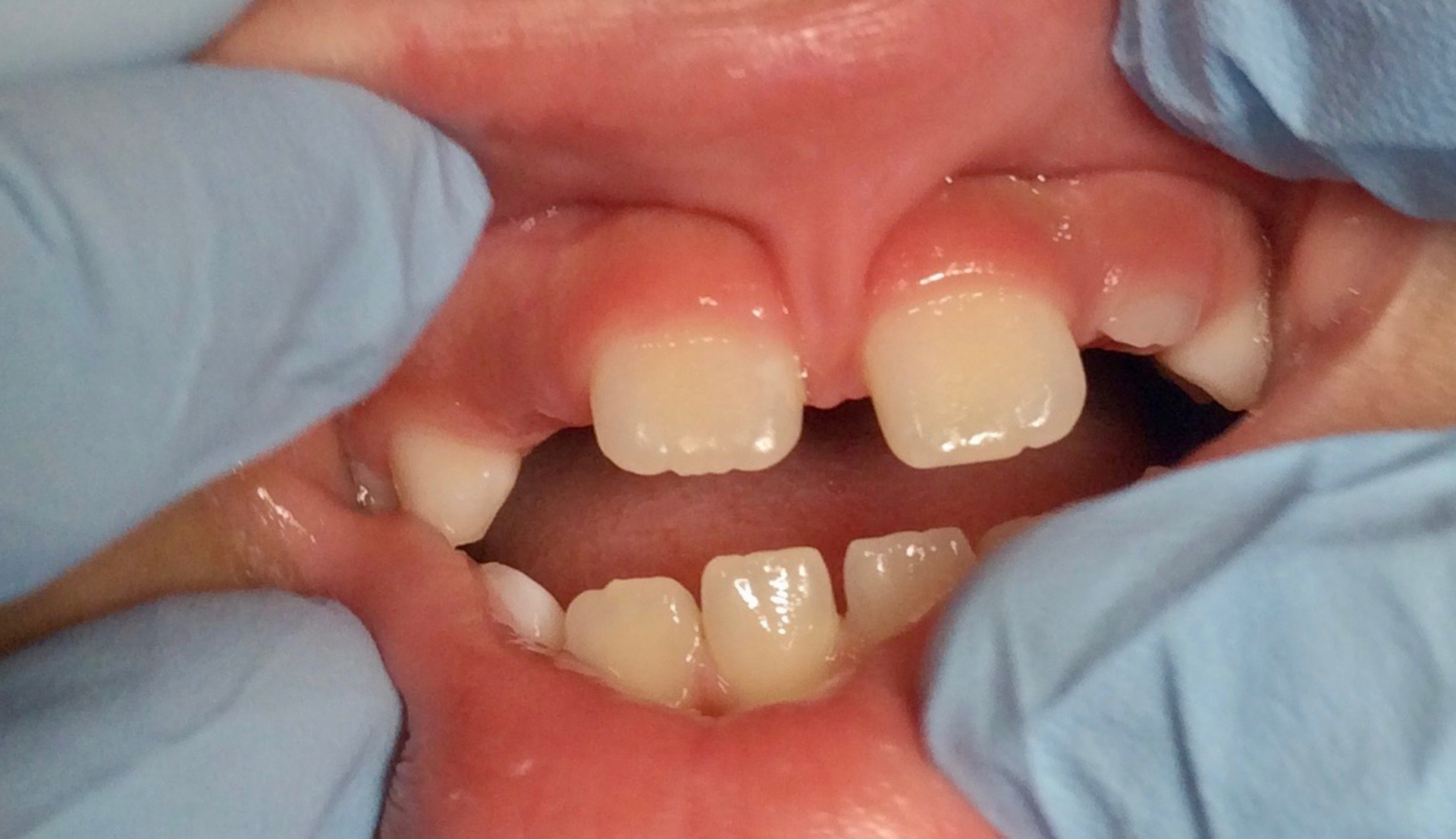Infant Frenectomies Explained: What Parents Should Expect
Feeding your newborn should feel natural and peaceful, but sometimes it doesn’t go according to plan. You might notice your baby struggling to latch during breastfeeding, making clicking sounds while eating, or becoming unusually fussy after meals. These challenges can leave new parents feeling frustrated and worried about their baby’s nutrition and comfort.
The culprit behind these feeding difficulties often lies in something surprisingly common: tongue and lip ties. These conditions affect how your baby’s mouth functions during feeding, and they’re becoming more widely recognized by healthcare professionals. When conservative approaches don’t resolve the issues, many parents find themselves considering a frenectomy—a minor procedure that can make a significant difference in their baby’s feeding experience.
This guide walks you through everything you need to know about infant frenectomies, from recognizing the signs that might indicate your baby needs one to understanding the procedure itself and supporting your little one through recovery. By the end, you’ll have the knowledge to make informed decisions about your baby’s care and feel more confident navigating this aspect of their early development.
Understanding Tongue and Lip Ties
What a Frenum Is
A frenum (or frenulum) is a small band of tissue that connects different parts of your baby’s mouth. The most commonly discussed are the lingual frenum, which connects the tongue to the floor of the mouth, and the labial frenum, which connects the upper lip to the gums. These tissues are completely normal and serve important developmental purposes during pregnancy.
When It Becomes a Problem
Problems arise when these tissue bands are too thick, too short, or positioned in a way that restricts normal movement. A tongue tie (ankyloglossia) limits your baby’s ability to extend, lift, or move their tongue freely. A lip tie restricts the upper lip’s ability to flange outward, which is crucial for creating a proper seal during feeding. These restrictions can significantly impact your baby’s ability to feed effectively.
Prevalence in Infants
Recent studies suggest that tongue ties occur in approximately 4-11% of newborns, though some research indicates the numbers may be higher. The increased awareness among healthcare providers means more ties are being identified and addressed than in previous generations. This doesn’t mean ties are becoming more common—rather, we’re simply getting better at recognizing and treating them.

Infant Frenectomy Issue Treatment
How Ties Affect Feeding and Growth
Breastfeeding Challenges
When your baby has a tongue or lip tie, establishing a good latch becomes much more difficult. You might experience sore, cracked, or bleeding nipples because your baby can’t maintain proper suction. Your baby may slide off the breast repeatedly, seem to work very hard while feeding, or fall asleep quickly during nursing sessions. These issues often lead to inadequate milk transfer, leaving both you and your baby frustrated.
Bottle-Feeding Concerns
Ties don’t only affect breastfeeding. Bottle-fed babies with ties may struggle to create proper suction around the bottle nipple, leading to excessive air intake during feeds. This can result in increased gas, reflux, or colic-like symptoms. Feeding times may become prolonged as your baby works harder to get adequate nutrition, and you might notice milk leaking from the corners of their mouth.
Impact on Weight Gain
When feeding becomes inefficient due to tongue or lip ties, weight gain often suffers. Your baby may not be transferring enough milk during feeding sessions, leading to slower-than-expected growth patterns. This can create additional stress for parents and may require more frequent weight checks with your pediatrician to ensure your baby is thriving.
Beyond Feeding: Other Issues Linked to Ties
Speech Development Later On
While feeding issues are usually the immediate concern, untreated tongue ties can affect speech development as your child grows. The tongue’s restricted mobility may make it difficult to produce certain sounds clearly, particularly those requiring the tongue to reach the roof of the mouth. Early intervention can help prevent these challenges from developing.
Oral Health Considerations
Tongue and lip ties can contribute to various oral health issues over time. Children with ties may develop gaps between their front teeth, experience gum recession, or have difficulty cleaning their teeth properly. The restricted tongue movement can also affect the natural cleansing action that helps prevent cavities and gum disease.
Airway and Breathing Effects
Some children with tongue ties develop mouth breathing patterns, which can affect sleep quality and overall health. The tongue’s position and mobility play important roles in maintaining proper airway function. Addressing ties early may help establish better breathing patterns and improve sleep for both baby and parents.
When to Consider a Frenectomy
Signs for Parents to Watch
Several signs might indicate your baby would benefit from a frenectomy. Listen for clicking or smacking sounds during feeding, which often indicate poor suction. Watch for signs of frustration during meals, such as pulling away from the breast or bottle, arching their back, or crying. Other red flags include poor weight gain, excessive feeding times, or persistent nipple pain for breastfeeding mothers.
Professional Assessments
Multiple healthcare providers can assess your baby for tongue and lip ties. Pediatricians, lactation consultants, and pediatric dentists all have training in identifying these conditions. A thorough assessment typically includes examining the appearance and function of the tongue and lips, observing feeding patterns, and discussing your specific concerns as parents.
Balancing Timing and Need
The best time for a frenectomy issue is often as early as possible, ideally within the first few weeks of life. Young babies heal more quickly, and addressing feeding issues early can prevent more significant problems from developing. However, each situation is unique, and your healthcare team will help you determine the right timing based on your baby’s specific needs and overall health.

Infant Frenectomy Issue Treatment Service
The Frenectomy Procedure Explained
Traditional vs. Laser Techniques
Frenectomies can be performed using traditional scissors or modern laser technology. Laser procedures often result in less bleeding, reduced discomfort, and faster healing times. The laser essentially vaporizes the tissue, creating a clean release while simultaneously sealing blood vessels. Many parents find laser procedures less anxiety-provoking because they’re typically quicker and involve less visible cutting.
What Happens During the Visit
The actual procedure is remarkably quick, usually taking just a few minutes. Your baby will be swaddled for comfort and safety, and the area will be numbed if necessary. The healthcare provider will carefully release the restrictive tissue, allowing for improved tongue and lip mobility. Most babies cry briefly during the procedure but calm down quickly afterward.
Pain and Recovery Expectations
Pain management is a primary concern for parents, but most babies experience minimal discomfort. The area may appear white or yellowish as it heals—this is completely normal and indicates healthy tissue regeneration. Many babies feed immediately after the procedure, and most parents are surprised by how quickly their little ones recover.
Recovery and Aftercare Tips for Parents
Helping Baby Heal
Your healthcare provider will likely recommend gentle stretching exercises to prevent the tissue from reattaching during healing. These exercises might feel uncomfortable to perform initially, but they’re crucial for optimal results. Keeping the area clean and providing extra comfort through feeding, swaddling, or gentle rocking can help your baby through the healing process.
Monitoring Progress
Improvements in feeding may be noticeable immediately, but full benefits often develop over several days to weeks as your baby learns to use their improved tongue and lip mobility. Keep track of feeding efficiency, weight gain, and overall comfort levels. Some babies need time to relearn feeding patterns after the restriction is removed.
Follow-Up Appointments
Most providers schedule follow-up visits to ensure proper healing and assess functional improvements. These appointments are excellent opportunities to discuss any concerns and ensure you’re seeing the expected benefits from the procedure. Don’t hesitate to contact your healthcare team if you have questions during the recovery period.
Evergreen Pediatric Dentistry: Compassionate Care for Your Baby
Gentle, Family-Centered Approach
We know that any procedure involving your baby can feel overwhelming. That’s why we’ve created a calm, welcoming environment where your concerns are heard and your little one receives the most gentle care possible. We’ll walk you through every step, ensuring you feel completely confident in your decision.
Cutting-Edge Laser Technology
Our state-of-the-art laser technology makes frenectomies more comfortable for babies while promoting faster healing. This precise approach minimizes bleeding and reduces recovery time, giving you peace of mind. Our team specializes in both advanced laser procedures and infant care, so your baby is in expert hands.
Comprehensive Team Support
Your family’s care extends beyond our office. We partner closely with lactation consultants, pediatricians, and other specialists to provide seamless, coordinated support throughout your baby’s treatment and recovery journey.
At Evergreen Pediatric Dentistry, we’re committed to making this experience as positive as possible for both you and your baby.

Infant Frenectomy Issue
Helping Your Child Thrive After a Frenectomy
Improved Feeding Experiences
Most families notice significant improvements in feeding efficiency and comfort following a frenectomy. Breastfeeding mothers often experience reduced nipple pain, while babies show better weight gain and seem more satisfied after meals. These improvements can transform the feeding relationship from stressful to enjoyable for the entire family.
Long-Term Health Benefits
Beyond immediate feeding improvements, addressing tongue and lip ties issue early can support better oral development, speech clarity, and overall health as your child grows. Many parents find peace of mind knowing they’ve addressed a potential source of future challenges while their baby is still very young.
Confidence for Parents
Perhaps most importantly, addressing feeding difficulties through a frenectomy can restore parents’ confidence in their ability to nourish and comfort their baby. The stress and worry that often accompany feeding struggles can significantly impact the early bonding experience, and resolving these issues allows families to focus on enjoying their time together.
Taking the Next Step for Your Baby’s Health
A frenectomy may seem like a significant decision, but for many families, it represents the key to unlocking more comfortable feeding experiences and setting the stage for healthy development. The procedure itself is brief and safe, while the benefits can last a lifetime.
If you’re noticing signs that might indicate your baby has a tongue or lip tie, trust your instincts and seek professional evaluation. Early intervention often leads to the best outcomes, and addressing these issues now can prevent more complex problems from developing later. Remember that seeking help isn’t a sign of failure—it’s an act of love and advocacy for your child’s wellbeing.
The journey of parenthood is filled with decisions both big and small. When it comes to your baby’s feeding comfort and long-term health, having the right information and support makes all the difference in moving forward with confidence.
Evergreen Pediatric & Airway Dentistry
Dr. Susan Kim
12910 Totem Lake Blvd NE #103
Kirkland, WA 98034
(425) 814-3196
Get Directions on Google Maps
evergreenkidsdentist.com


